A Texas Sea Grant Q&A: Getting to Know Meghan Martinez A 2020 NOAA Coastal Management Fellow Interview by Sara Carney
Texas native Meghan Martinez turned a lifelong curiosity for coastal environments into a career in marine science. Now a NOAA Coastal Management Fellow, she’s using her background in oyster restoration and youth education to support wetland resilience efforts in California.
Jun 8, 2020 By Sara Carney
7 minutes
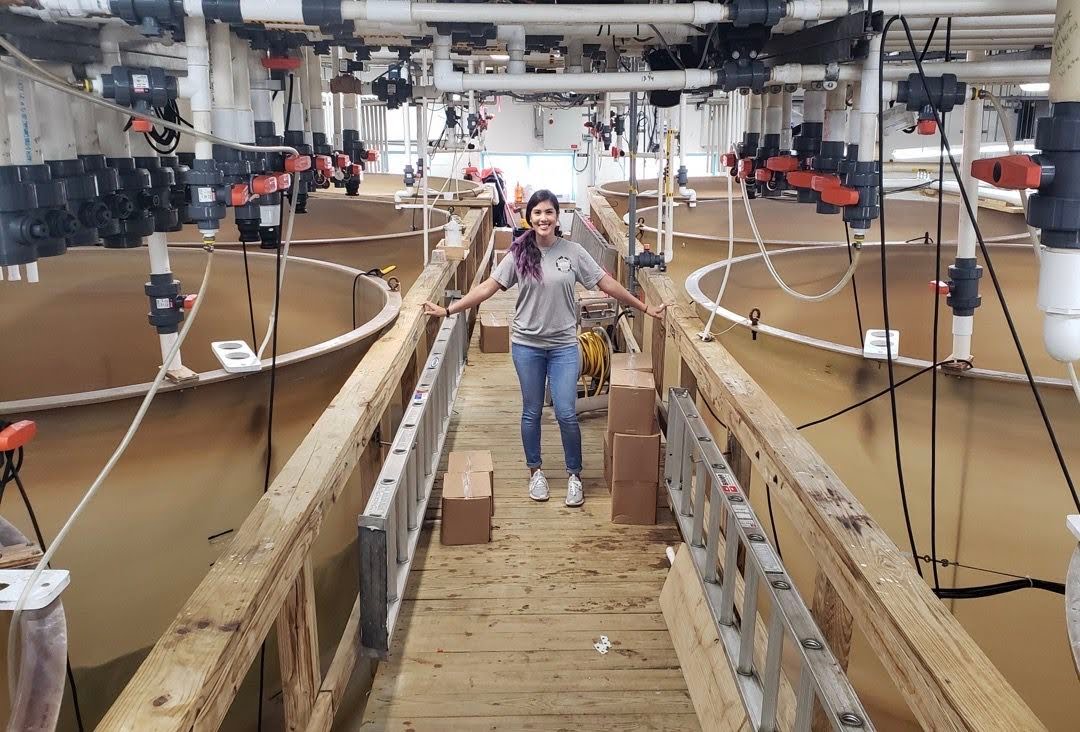 Meghan Martinez at the <a href=”http://hatchery.hpl.umces.edu/” data-type=”link” data-id=”http://hatchery.hpl.umces.edu/”>University of Maryland Center for Environmental Science Horn Point Oyster Hatchery.</a>
Meghan Martinez at the <a href=”http://hatchery.hpl.umces.edu/” data-type=”link” data-id=”http://hatchery.hpl.umces.edu/”>University of Maryland Center for Environmental Science Horn Point Oyster Hatchery.</a>Meghan Martinez is one of two NOAA Coastal Management and Digital Coast Fellows selected from Texas and nominated by Texas Sea Grant. This two-year, postgraduate program provides on-the-job education and training opportunities in coastal resource management, policy, and coastal issues. Fellows are matched with NOAA partner organizations around the country to work on projects relevant to coastal resource management and policy.
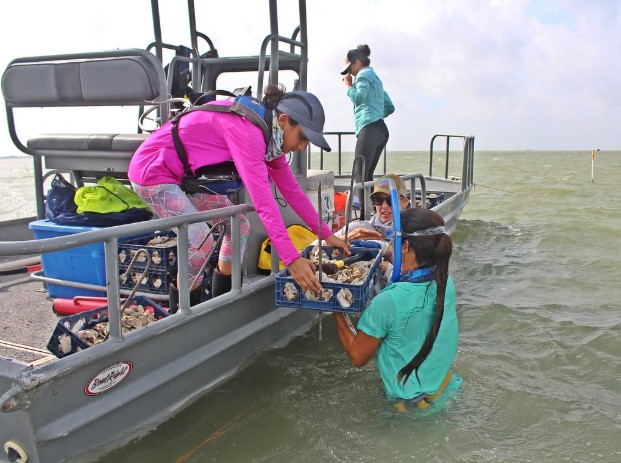
Meghan Martinez teaching Moody High School Students.
Meghan Martinez being handed a box of oyster shells during an oyster reef restoration project. Credit: John Blaha and Lisa Laskowski with Coastal Conservation Association Texas.
Photo by Edgar De La Garza
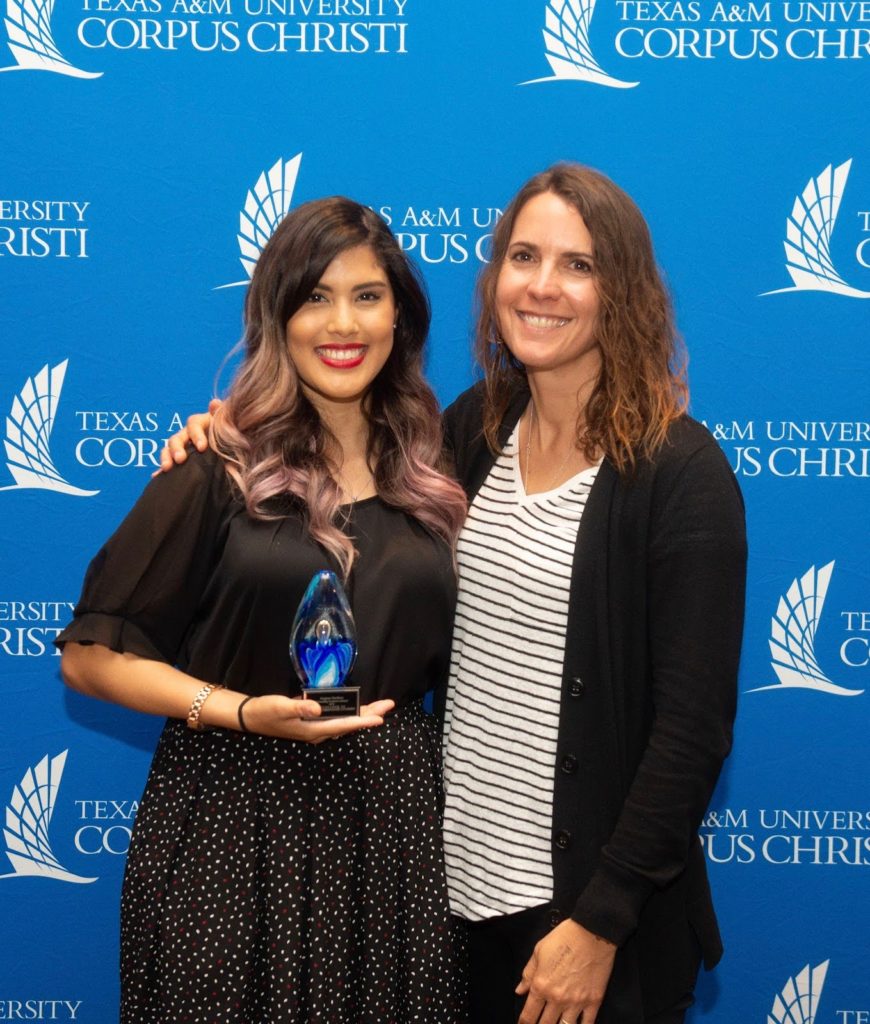
Photo by Edgar De La Garza.
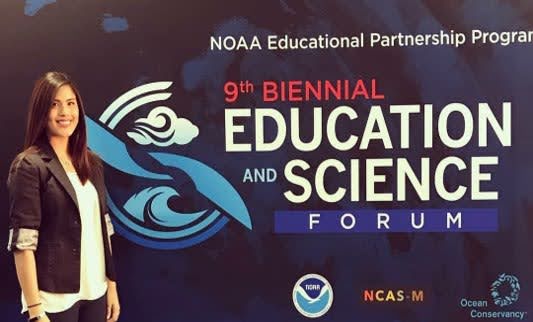
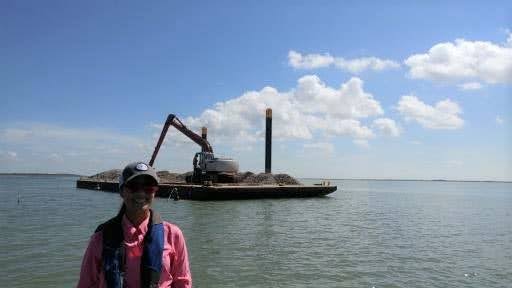
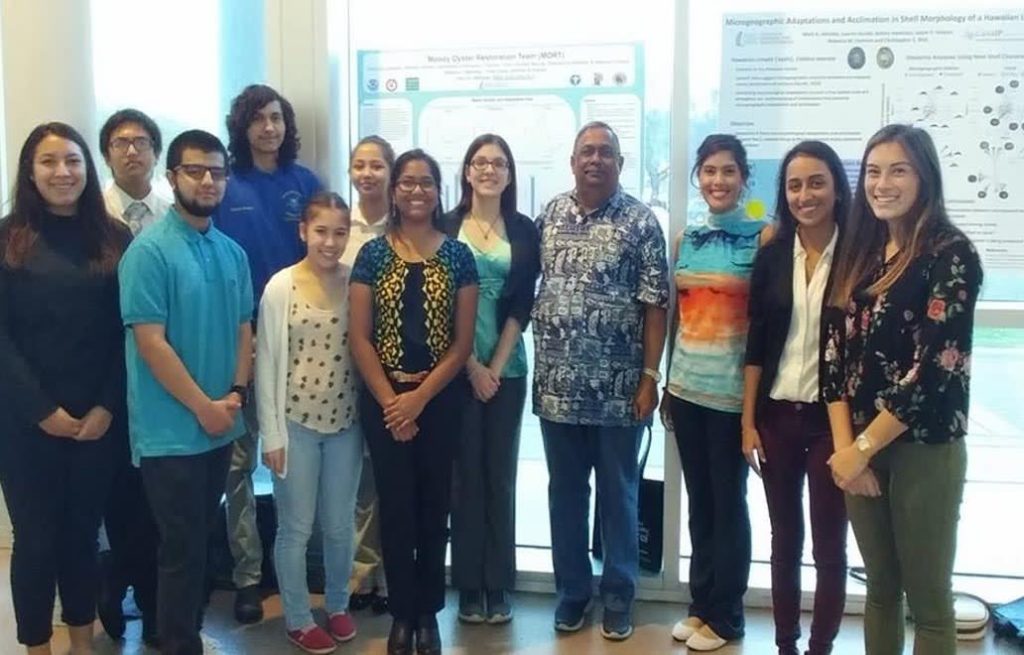
Tell me about yourself.
I was born in El Paso, Texas, so I’m a Texas native. My father was in the military (Army) for 23 years, and my family and I traveled wherever his career took him. Growing up as a military brat I never actually lived near the coast, but always had a natural affinity and curiosity for aquatic environments. Over the years coastal systems captivated me, and I’ve been working toward turning this lifelong interest into a career ever since.
I recently graduated with my masters in marine biology from Texas A&M University-Corpus Christi in Fall 2019, and I also received my bachelor’s degree in biology back in 2014 from the same institution. During this time, I worked to develop myself professionally and was grateful to establish close connections with an amazing community of people who provided support, guidance, and friendship along the way.
What projects have you been involved in throughout your career and education?
Toward the end of my undergraduate program, I was selected by the Texas Parks and Wildlife Department as a fisheries and wildlife research assistant in a competitive internship. I gained experience with state agency staff collecting fisheries dependent and independent data. The data generated would later influence fishing limits and regulations. It was really neat to see science implemented in a direct way.
I then went on to work as an undergraduate research assistant on a master’s student’s fisheries research in Dr. Jennifer Pollack’s lab— the Coastal Conservation and Restoration Ecology Laboratory at the Harte Research Institute. It was that position that eventually led me to become a graduate student under Dr. Pollack.
My master’s thesis research was focused on assessing the influence of oyster reef restoration on benthic communities and development using ecological metrics. The rationale for my research was to better understand the effects that restoration has on estuarine species and ecological processes, with the overall goal of generating resilient habitat and influencing resource management decisions.
Outside of the technical aspect of my research, there was also an educational component incorporated in my project. The purpose of this was to connect youth in South Texas to coastal habitat conservation by directly engaging them in restoration planning, design, implementation, research, and monitoring efforts. Over the course of two years, I led a training program for high school and undergraduate students. I helped them acquire experience in various field sampling techniques and gear types; data acquisition, analyses, and interpretation; laboratory skills; and career development to include scientific writing and communication. This experience was definitely one of the most rewarding aspects of my graduate career.
What inspired you to apply for the NOAA Coastal Management Fellows Internship?
A unique challenge that presented itself at the start of my master’s project came in the form of Hurricane Harvey. The hurricane traveled directly over my project site, but miraculously left my project design and structural integrity intact. However, the same could not be said of the surrounding community. Going forward, this event made me consider how nature-based solutions, coastal policies, and hazard mitigation really affect how a community prepares and responds to natural disasters, and made me interested in pursuing a career in coastal management. Throughout the course of my master’s program, I was fortunate to be a NOAA Center for Coastal and Marine Ecosystems Scholar. This program not only enhanced my educational experience, but offered incredible support and opportunities for professional development. It was through this program that I was exposed to marine policy, social sciences, and interdisciplinary approaches to issues and challenges confronting coastal and marine communities.
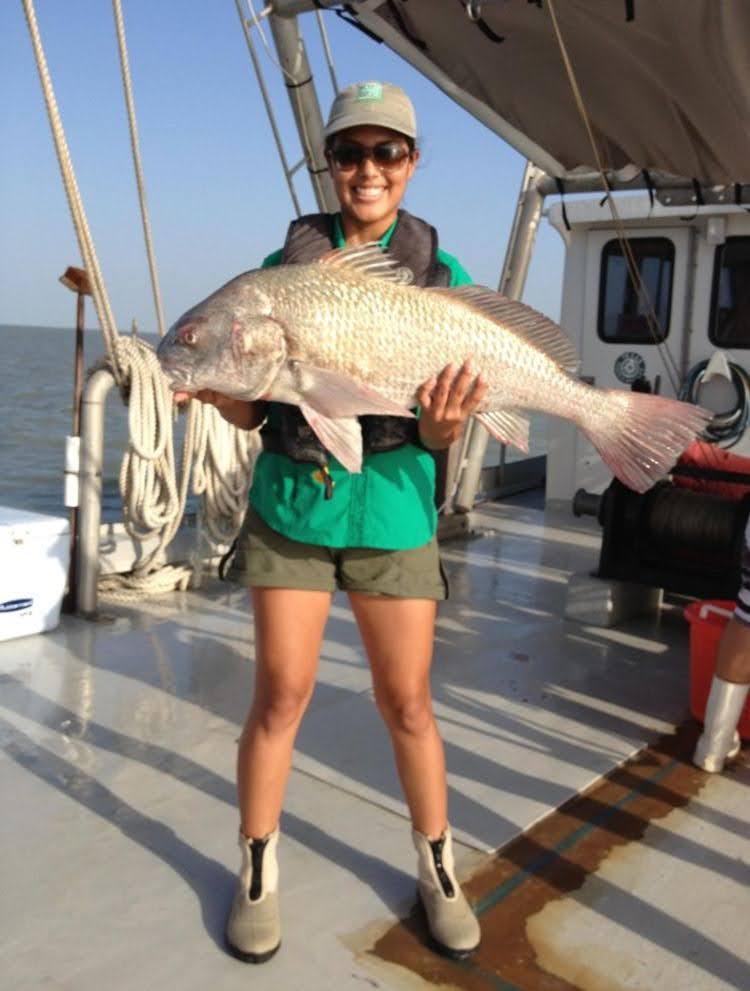
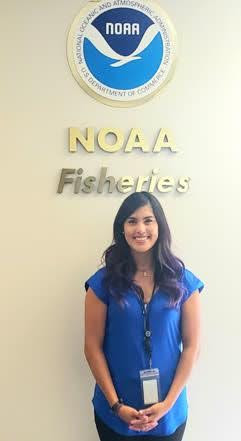

Photo by Edgar De La Garza
You matched with the California State Coastal Conservancy. Tell me about the organization.
The Coastal Conservancy is a non-regulatory state agency in Oakland, California that was established to protect and improve natural lands and waterways, help people access the outdoors, and sustain local economies along California’s coast.
The conservancy implements statewide resource plans through its projects and works along the entire length of California’s coast and within the watersheds of rivers and streams that extend inland from the coast. The conservancy works with local communities, nonprofit organizations, other government agencies, businesses, and private landowners to implement multi-benefit projects.
What will you work on as part of the fellowship?
The project will be focused on a comprehensive approach to bring together coastal wetlands and watersheds, as well as science and community engagement per an existing regional strategy that will be used to implement wetland restoration in Southern California.
My particular role in this project is to implement, track, and evaluate the existing regional plan for Southern California wetlands, and also to increase wetland resiliency through a community-based wetland restoration grant program.
What is the significance of this project?
Wetlands are economically and ecologically important, and offer “ecosystem services” that benefit not only the surrounding environment, but also humans. Wetlands can trap and filter pollutants, and accumulate and store carbon. They protect shorelines, property, and infrastructure from flooding, and are valuable nursery habitats for many different species. Enhancing coastal and wetland resiliency means giving the ecosystem the best chance to recover from climate change or coastal issues, including rising sea levels, storms, development, urbanization, and other stressors. These valuable ecosystems are nature’s first line of defense, so protecting them is critical.
What would you like to gain from this experience?
I would love to build upon my existing foundation, and eventually leverage the skills and knowledge I attain through this fellowship to be in the position to positively influence decision-making, policies, and management of marine environments and coastal communities. I feel that this opportunity will only make me a more well-rounded researcher, scientist, and collaborator.
How does it feel to be selected for this fellowship?
Truly, I am honored to be chosen for this prestigious fellowship and this particular project. I think it’s going to be a great opportunity to work with passionate people who want to make a difference in their own communities, and to gain new experiences and skills. I’m really thrilled to be a part of this experience, and grateful to have had fantastic support and mentorship throughout my career to help me get to this point. I’m beyond words.
What do you like to do outside of work and research?
I’m a National Park Geek — I enjoy collecting the cancellations, pins, magnets, and postcards (call me obsessed)! I love spending time outdoors, going hiking and trail-walking through state and national parks, and the beach. I also enjoy karaoke, dancing, and movies —and just having a great time and laughing (a lot) with friends. More importantly, I am most fulfilled by spending time with loved ones to include family, friends, and my pup Bailey — she’s a miniature dachshund, and the cutest ever!
